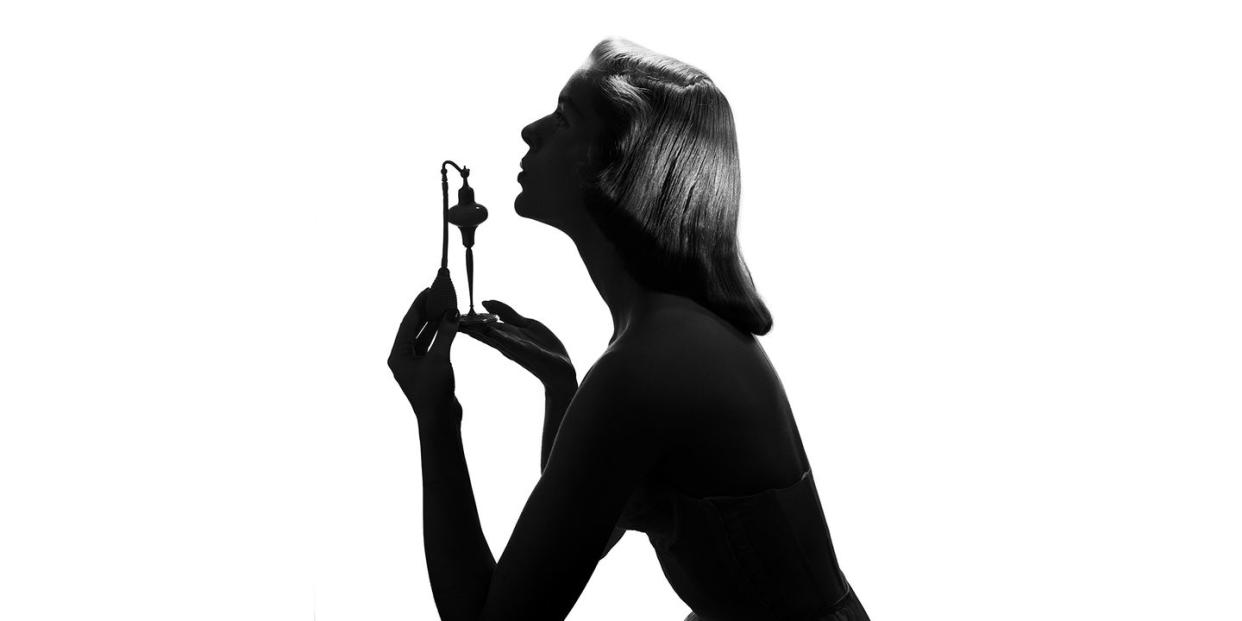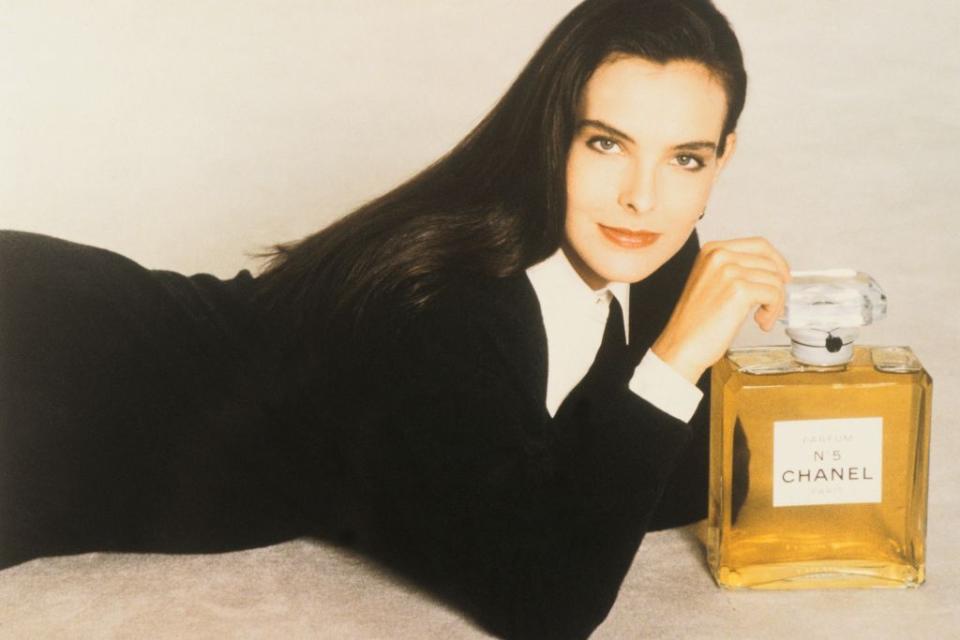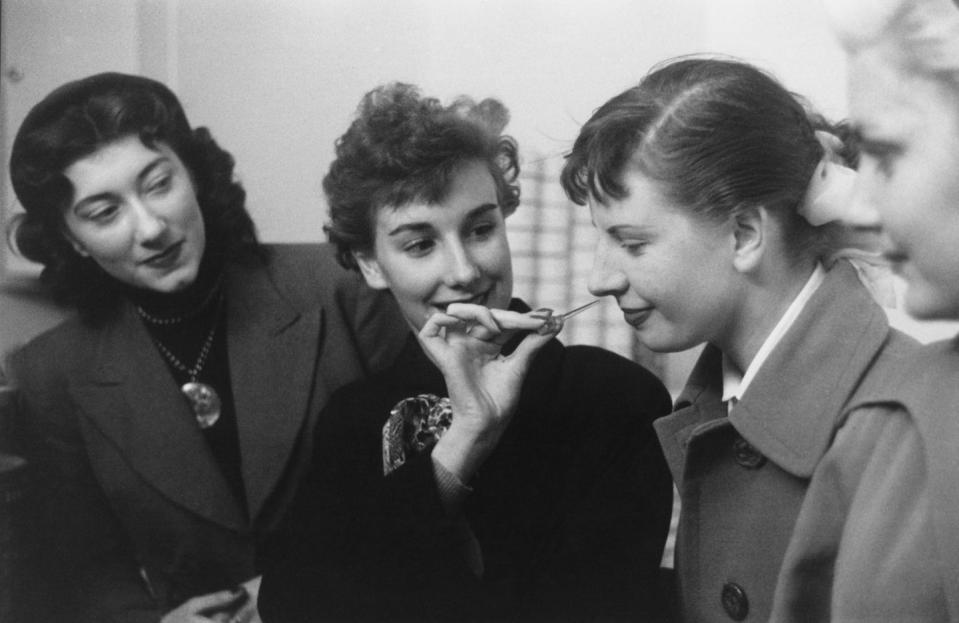Why "Old Lady Perfumes" Never Go Out of Style

"Hearst Magazines and Yahoo may earn commission or revenue on some items through the links below."
It’s said that to get older is to get wiser. But apparently, we don’t want to smell that way. Calling a classic fragrance an “Old Lady Perfume” has become such an accepted part of the modern beauty vernacular that it feels like a harmless, even humorous, descriptor. But is it either of those? (Spoiler: not really.)
The term is inaccurate at best, ageist at worst. We hear it from sales associates, assuring us that we don’t want that older fragrance because it’s too powdery, too strong, or too much … something. We read it in editorials telling us about the latest perfume launches, usually as a caveat along the lines of, “Don’t worry, though, this new perfume isn’t like that.”

Whatever the intent of calling something Old Lady might be, the implication seems negative. No one is talking about how the hottest new perfume releases smell like Old Lady, or that for spring, the latest trend is Old Lady. And if someone, after embracing you and catching a whiff of your scent, says, “Wow, you smell like Old Lady,” that’s probably not a compliment.
But what exactly is an Old Lady Perfume? The term is generally applied to perfumes launched between the 1920s to the 1980s. And though the fragrances that fall under the Old Lady Perfume umbrella aren’t a monolith, there are some common threads.
The best known Old Lady Perfume is probably the classic Chanel No. 5, which launched a century ago. The main ingredients in this iconic blend are synthetic aldehydes, which were groundbreaking in 1921 and impart the powdery soapiness we’ve come to associate with the famous blend. Guerlain Shalimar, Yves Saint Laurent Opium, and Nina Ricci L’Air du Temps have similar profiles; Shalimar and Opium emit a powdery amber essence, while L’Air du Temps has a carnation note that smells soapy. They, too, are often referred to as Old Lady Perfumes.
Another common attribute of an Old Lady Perfume is that, during its original era, the fragrance ascended to “scent profile” status. This means the perfume became so pervasive, it was replicated over and over, making its way into candles, air fresheners, soaps, detergents, and other household cleaning products. In some cases, the scent even came to define the smell of a generation. Want a whiff of the ’80s? Spritz Opium.
Today’s Old Lady Perfumes were once the Baccarat Rouge 540s by Maison Francis Kurkdjian, the Tom Ford Lost Cherrys, and the Glossier Yous of their time. Baccarat Rouge, in particular, is well on its way to becoming a scent profile, as it’s being copied in candles and mass-market bath and body products. And is that a bad thing? Chanel No. 5 is still the top-selling fragrance in the world.
Meanwhile, there has also been a shift in the conversation around aging in general. Are we still “anti-aging,” or can we finally admit that aging is actually the goal? We do everything we can to live longer, from juicing to taking supplements to daily Peloton classes. Thankfully, the language around skincare marketing is also largely transitioning from magically erasing fine lines and lifting sagging jaw lines to offering more realistic expectations. It’s only a start, but it’s hopefully making the stigma of getting old, well, dated.

Similarly, like the movement toward removing gender from fragrance, perhaps it’s time we did away with age-related marketing too? On the other end of the age spectrum, marketing fragrances as “young” can backfire. Recently, prestige brand KILIAN Paris introduced a younger-aiming version of its luxury line at Sephora. The names were long and silly, and the bottles were upside down, which caused leakage. They were more cheaply made for a younger market, but not inexpensive at more than $100 apiece. Though they sold well, the brand ended up redesigning the packaging to a more traditional bottle. And who could forget Love’s Baby Soft, which had the Lolita-inspired tagline, “Because innocence is sexier than you think”? (Shudder.)
Just because something was created decades ago does not mean it no longer has value. Just look at the fashion world, where vintage items are often the most desirable. Fragrance is deeply connected to memory and nostalgia, which may explain why so many women still mist on their beloved No. 5 or Shalimar. Let them. Someday you might be one of them.
You Might Also Like
